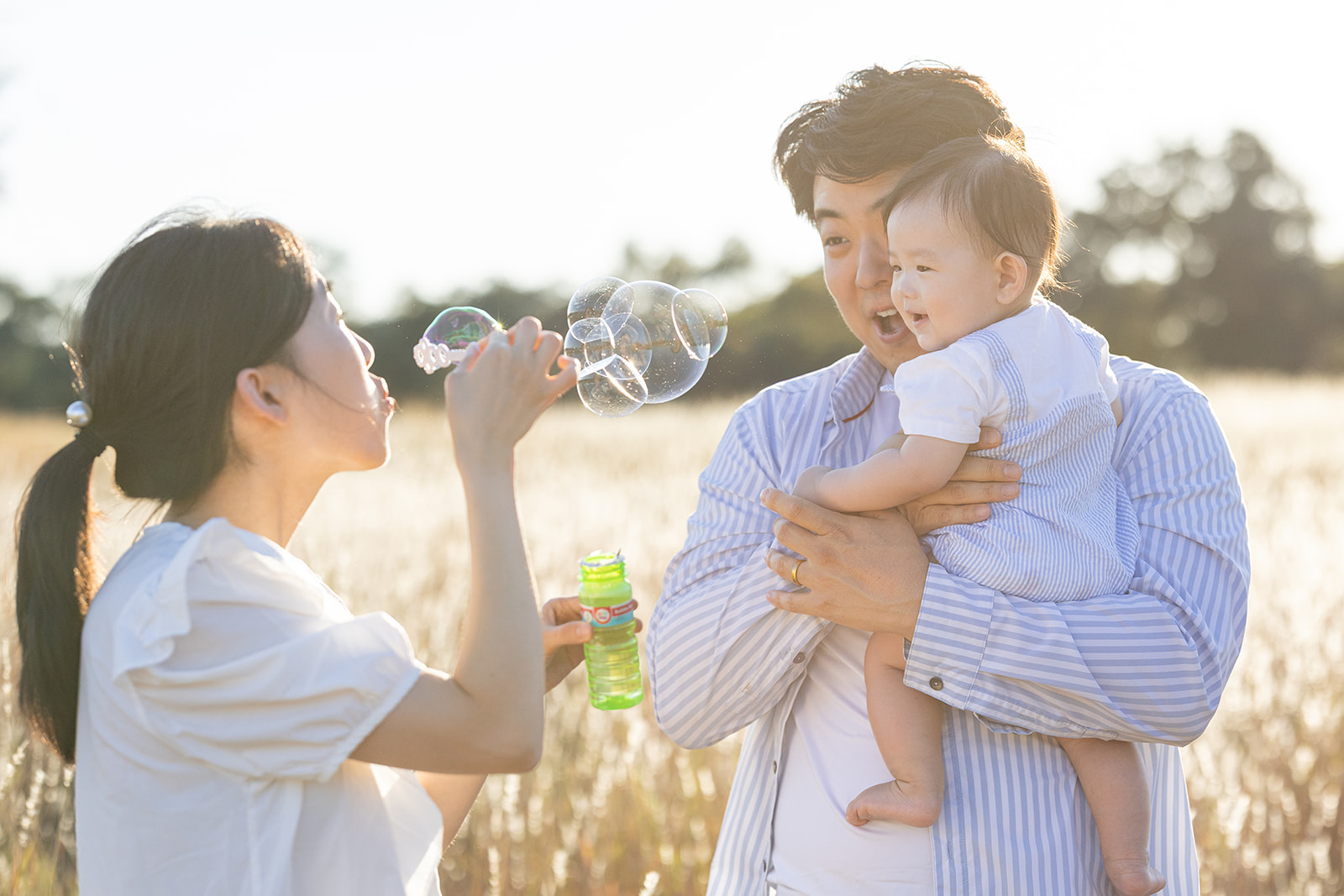
Photography, at its core, is about capturing light. Long before flashes and softboxes, photographers relied solely on the most abundant and versatile light source available: natural light. And even today, with all the advances in artificial lighting, natural light remains a favorite for many portrait photographers — including me. Its beauty, variability, and authenticity make it an irreplaceable part of any creative workflow. In this post, I want to explore why natural light is such a powerful tool, how it can elevate your portraits, and how to use it to your advantage, especially if you’re preparing for your own session.
1. Natural Light Is Incredibly Versatile
From the soft, golden tones of early morning to the deep shadows of late afternoon, natural light changes constantly throughout the day. Each phase brings a unique mood and feel. The golden hour (shortly after sunrise and before sunset) is popular for a reason: the sun is low in the sky, casting warm, diffused light that flatters the skin and creates a dreamy atmosphere. But even mid-day light, with its harsher shadows, can be used creatively to create dramatic and high-contrast portraits. The key is to understand the light and adapt your approach.
In portrait sessions, I often choose times of day and locations based on the kind of natural light available. Trees offer dappled light. Open shade provides an even, soft look. Cloudy days create the perfect natural diffuser. Each of these conditions offers a different mood, and learning to see and shape natural light is what brings portraits to life.
2. It Feels Real
There is something deeply honest about natural light. It feels raw, unfiltered, and intimate. Our eyes are accustomed to it, so when we see a photograph lit with natural light, it feels familiar and real. This authenticity makes a portrait more relatable. Whether I’m photographing a couple, a family, or a solo portrait, natural light adds a timeless quality to the image.
Clients often tell me how much they love the “natural feel” of my photos. That’s no accident. By using the existing light in a location and working with it — instead of trying to overpower it — the results feel spontaneous and alive. There’s beauty in letting people be themselves in natural settings, without intrusive lighting equipment.
3. Natural Light Is Free and Available Everywhere
Let’s not forget a practical point: natural light is accessible to everyone. You don’t need to invest in expensive lighting gear to create beautiful portraits. All you need is an understanding of when and how to use the light that’s already around you.
This is especially important for new photographers, or for clients considering a session but unsure of what it involves. Great photos don’t require a studio. A park, a backyard, a downtown street, or even your front porch can be the perfect setting. As long as there’s light, there’s potential.
4. How I Use Natural Light in My Portrait Sessions
In every session, natural light is my guide. I arrive early and walk through the location, noticing where the sun is, how it falls on faces, and what kind of mood it creates. I use reflectors or adjust angles to make the most of what nature offers.
If we’re shooting in the morning, the light is usually softer and cooler. I might place clients so the sun is behind them to create a soft backlight and reduce squinting. During the golden hour, I love shooting with the sun to the side or just behind the subject to create glowing skin and a gentle halo effect. Cloudy days? Even better — they create a natural softbox.
Understanding how to use this kind of light means you can relax into the moment. You’re not being blinded by flashes or surrounded by equipment. Instead, you’re just out in the world, being yourself. And that’s when the most beautiful photos happen.
5. Connecting Emotionally Through Light
Light has an emotional component. The soft glow of sunset evokes peace and nostalgia. Bright morning light feels fresh and hopeful. Low, moody evening light can bring a sense of drama or intimacy. When I plan a session, I think about the story we want to tell and how the available light supports that mood.
This is where photography becomes more than just documentation. It becomes storytelling. A good portrait isn’t just about looking good — it’s about feeling something when you look at it. Natural light helps me do that. It carries emotion, texture, and a connection to the moment that’s hard to fake.
6. Tips for Making the Most of Natural Light (as a Client)
If you’re preparing for a portrait session that will be lit by natural light, here are a few tips:
- Timing matters: Morning and late afternoon are usually best. The light is softer, and the temperatures are more comfortable.
- Clothing choices: Light or neutral colors work beautifully in natural light. Avoid neon or overly bright colors that might reflect too strongly.
- Hair and makeup: Keep it simple and natural. The light will already be doing a lot of work to flatter you.
- Be flexible: Weather and clouds can change quickly. Trust your photographer to make the call. Some of my favorite sessions happened on overcast days or in locations I picked on the fly.
- Let go: The more you relax and let the moment unfold, the more the light can work its magic. Don’t worry about posing perfectly. Just be present.
7. Why I Rely on Natural Light
As a portrait photographer in Austin, Texas, I have access to amazing outdoor locations — parks, urban streets, gardens, and hidden gems. And with the beautiful light we get here almost year-round, it would be a shame not to take advantage of it.
Natural light lets me move freely. It lets my clients feel at ease. It creates a sense of spontaneity and realness that I just don’t get with studio setups. And most importantly, it lets the moment shine. My goal in every session is to capture not just how someone looks, but who they are. And nothing helps me do that better than the sun.
8. Natural Light Isn’t Perfect — And That’s Okay
Of course, natural light isn’t always easy. Sometimes it changes too fast. Sometimes it’s too bright. Sometimes you wish you had a little more control. But that’s the beauty of it. Working with natural light teaches patience, creativity, and flexibility.
You learn to look. You learn to wait. You learn to see light not just as brightness, but as emotion and mood. That skill carries over into everything else — how you pose, how you compose, how you connect.
So whether you’re planning a session, or just taking photos of your own life, I encourage you to look around. Notice how the light hits someone’s face. Notice the shadows. Step outside at different times of day. The more you see, the better you understand how to capture beauty exactly as it is.
9. Ready for Your Natural Light Portrait Session?
If you’ve been thinking about getting portraits done but have been nervous about being in front of the camera, natural light might be your best friend. It’s gentle, flattering, and honest. And with a little guidance, you’ll find it brings out your best side in a way that feels effortless.
My sessions are relaxed and simple. We pick a beautiful spot, find the light, and take our time. I’ll guide you through every step and make sure you feel comfortable the entire time. You don’t have to know how to pose or what to do. Just show up, be yourself, and let the light do the rest.
Conclusion
Natural light is more than just a tool for photographers. It’s a collaborator. It shapes mood, enhances emotion, and reveals truth. And for portrait photography, it brings something no equipment can fully replicate — authenticity.
So the next time you think about booking a portrait session, consider this: all you really need is a beautiful space, a little bit of time, and the light we all share. Everything else will follow.



